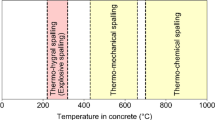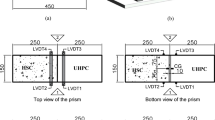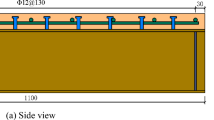Abstract
The aim of this study is increasing the connection strength between the asphalt course and the semi-rigid base course. A revolutionary method was put forward, which used nails to connect the asphalt course to the rigid or semi-rigid base course. The interlaminar shear and fatigue performance of asphalt pavement were evaluated through shear and fatigue testing by using nails to connect the asphalt course with the semi-rigid base course. The results show that shear strength of the interface connected by the nails between the asphalt mixture and the cement stabilized macadam was double that of the interface connected by the modified asphalt emulsion prime and seal coat. Its fatigue life was extended 47.3% compared with that of the interface linked by the modified asphalt emulsion prime and seal coat. We demonstrate that the performance of the interlayer connection and asphalt pavement structure integrity can be improved by incorporating nails to connect the asphalt course with the semi-rigid base course.
Similar content being viewed by others
References
AI Hakim, B. (1997). An improved back calculation method to predict flexible pavement layers module and bonding condition between wearing course and base course, Liverpool John Moores University, Liverpool, UK.
Diakhate, M., Millien, A., Petit, C., Phelipot-Mardele, A., and Pouteau, B. (2011). “Experimental investigation of tack coat fatigue performance: Towards an improved lifetime assessment of pavement structure interfaces.” Construction and Building Materials, Vol. 25, No. 2, pp. 1123–1133.
Diakhate, M., Phelipot, A., Millien, A., and Peltit, C. (2006). “Shear fatigue behavior of tack coats in pavements.” Road Materials and Pavement Design, Vol. 7, No. 2, pp. 201–222.
Hachiya, Y. and Sato, K. (1997). “Effect of tack coat on bonding characteristics at interface between asphalt concrete layers.” Proceedings 8th International Conference on Asphalt Pavements, University of Washington, Seattle, Vol. 1, pp. 349–362.
JTG F40-2004 (2004). Technical specifications for construction of highway asphalt pavements, China Communication Press, Ministry of Transport, Beijing.
JTJ 034-2000 (2000). Technical specifications for construction of highway sub-bases, China Communication Press, Ministry of Transport, Beijing.
JTJ 052-2000 (2000). Standard test methods of bitumen and bituminous mixtures for highway engineering, China Communication Press, Ministry of Transport, Beijing.
JTJ 057-94 (1994). Test methods of materials stabilized with inorganic binders for highway engineering, China Communication Press, Ministry of Transport, Beijing.
Kruntcheva, M. R., Collop, A. C., and Thom, N. H. (2005). “Effect of bond condition on flexible pavement performance.” Journal of Transportation Engineering, Vol. 131, No. 11, pp. 880–888.
Mantilla, C. and Button, J. W. (1994). Prime coat methods and materials to replace cutback asphalt, Report 1334-1F, Texas Transportation Institute, Texas A & M University, College Station, Texas.
Mohammad, L. N., Bae, A, Elseifi, M. A., Button, J., and Patel, N. (2010). “Effects of pavement surface type and sample preparation method on tack coat interface shear strength.” Transportation Research Record, Vol. 2180, pp. 93–101.
Papagiannakis, A. T. and Masad, E. A. (2007). Pavement design and materials, John Wiley and Sons, Inc.
Roffe, J. C. and Chaignon, F. (2002). “Characterization tests on bond coasts: worldwide study, Impact, Tests, and Recommendations.” 3rd International Conference on Bituminous Mixtures and Pavements, Held Thessaloniki, pp. 603–609.
Shaat A. A. (1992). Investigation of slippage of bituminous layer in overlaid pavement in Northern Ireland, Consultancy Report Submitted for the DOE in Northern Ireland, Belfast, UK.
Thomas J. Freeman, Joe W. Button, Cindy K. Estakhri. (2010). Effective prime coats for compacted pavement bases, Report 0-5635-1, Texas Department of Transportation Research and Technology Implementation Office, Texas.
Tschegg E. K., Kroyer G., Tan D. M., Stanzl-Tschegg, S. E., and Litzka, J. (1995). “Investigation of bonding between asphalt layers on road construction.” Journal of Transportation Engineering, Vol. 121, No. 4, pp. 309–316.
Xu, J. C. (2010). Study on solutions of sub grade disease of expressway and establishment of PMS System, Jilin University, China.
Author information
Authors and Affiliations
Corresponding author
Rights and permissions
About this article
Cite this article
Ge, Zs., Wang, Yy. The interlaminar shear and fatigue performance of pavement structure connected by the nail. KSCE J Civ Eng 18, 160–164 (2014). https://doi.org/10.1007/s12205-014-0325-5
Received:
Revised:
Accepted:
Published:
Issue Date:
DOI: https://doi.org/10.1007/s12205-014-0325-5




